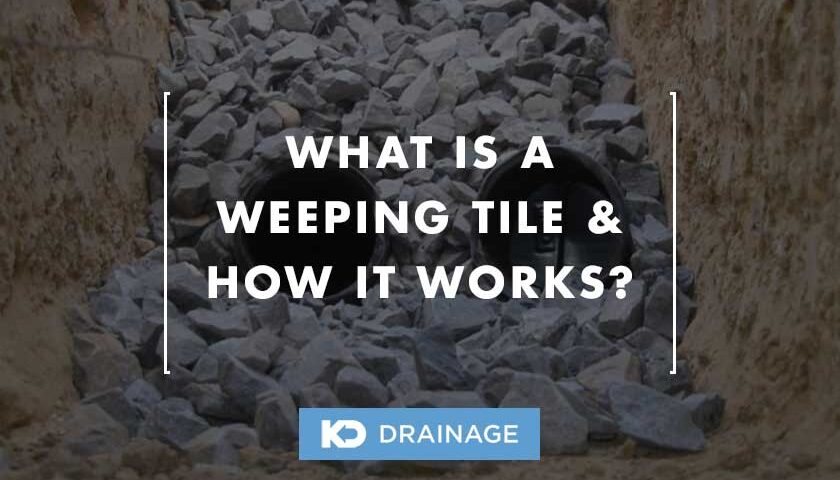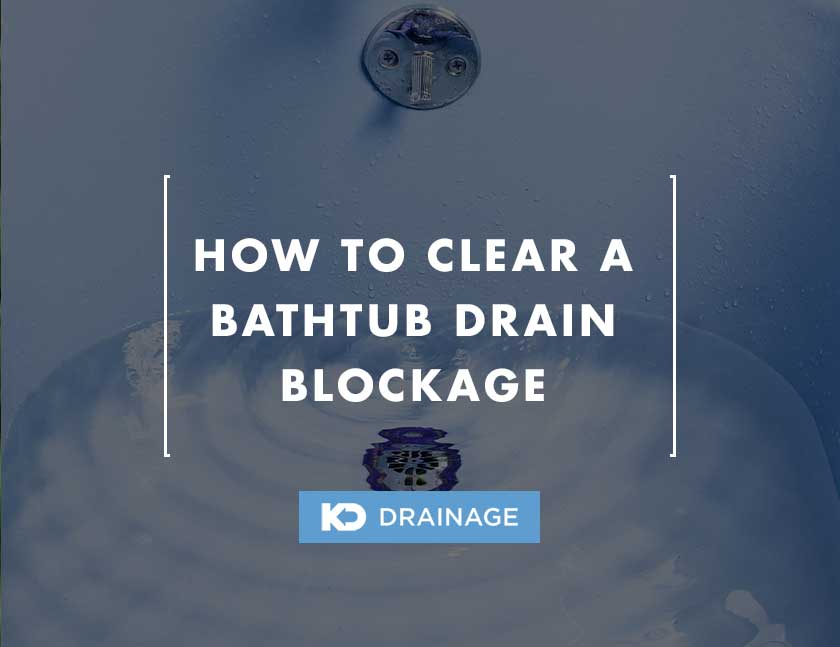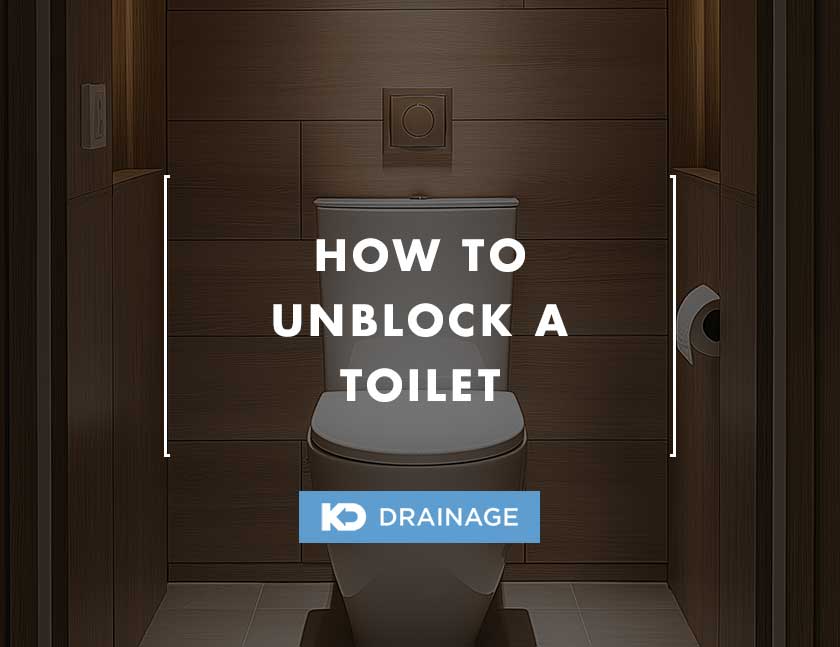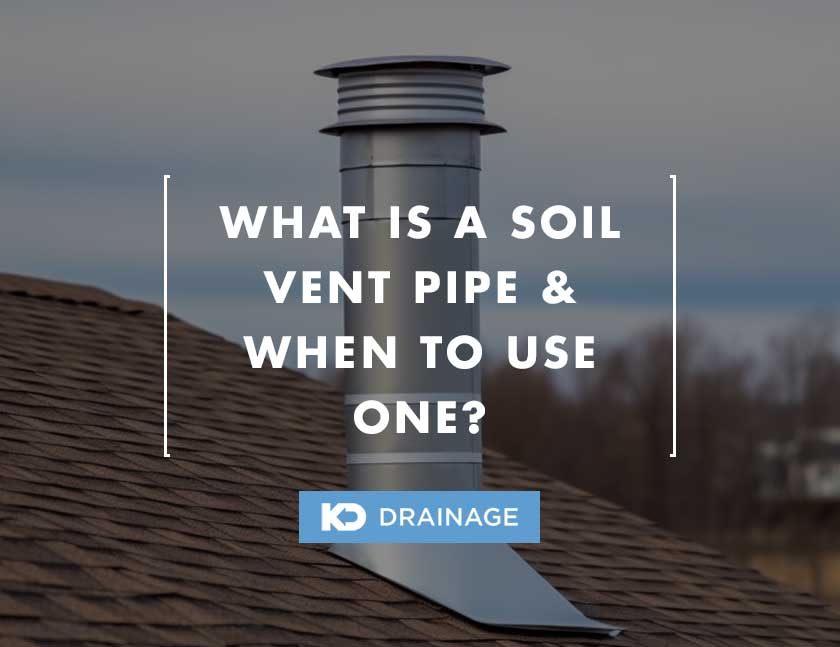
What is a Soil Vent Pipe & When to Use One?
1 December 2023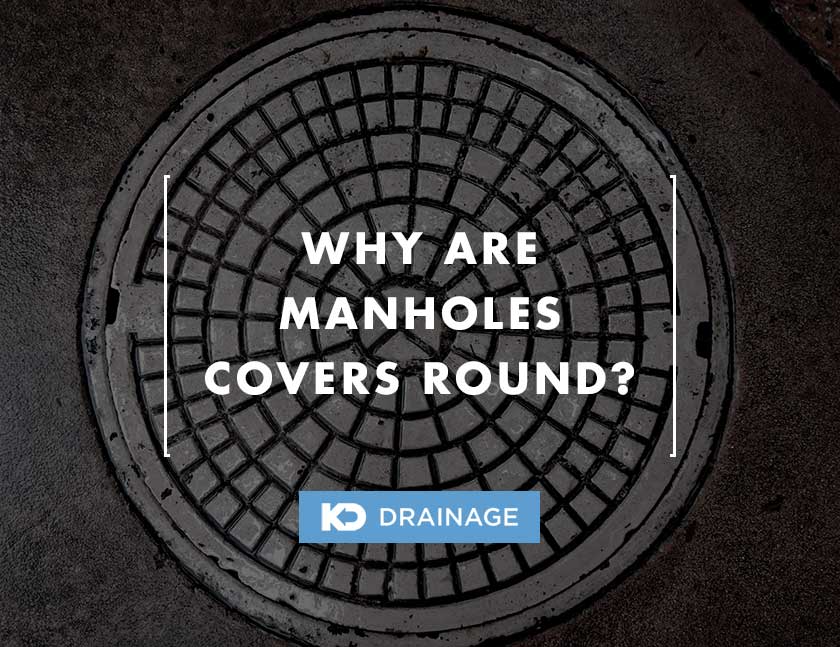
Why are Manhole Covers Round?
1 February 2024What is a Weeping Tile & How It Works?
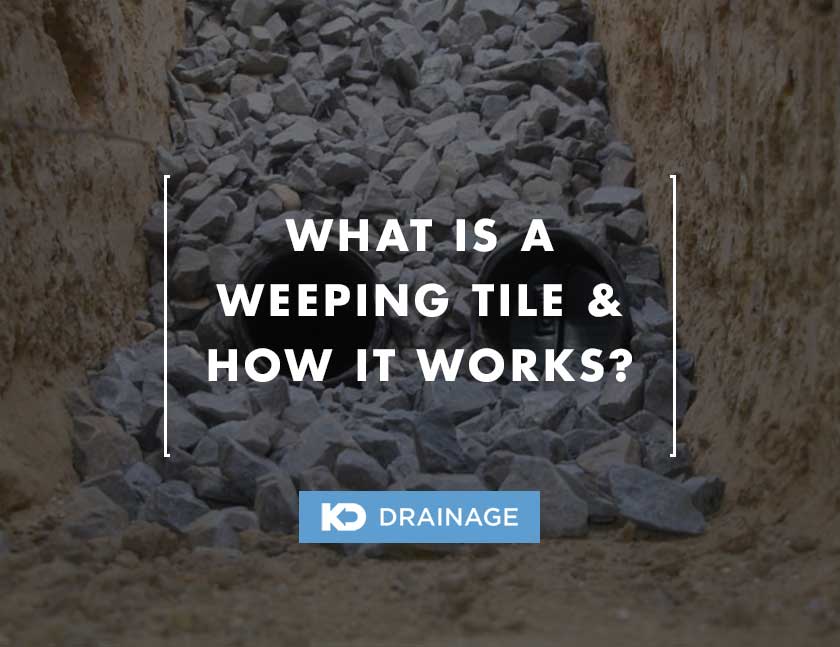
You may have come across the term ‘weeping tile’ when looking for home drainage solutions.
This article aims to unravel the complexities surrounding weeping tiles, providing a comprehensive understanding of their construction, operation, and significance in mitigating water-related challenges within residential environments.
By comprehensively grasping the principles governing weeping tiles, homeowners can make informed decisions about their drainage needs, fostering a secure and habitable living space.
Table of Contents
What is a Weeping Tile?
A weeping tile is a type of French drain and represents a fundamental component of drainage systems employed in residential and commercial structures.
Contrary to its name, a weeping tile is not a tile, but instead comprises a porous pipe crafted from diverse materials such as plastic, clay, or concrete.
This perforated pipe is strategically buried beneath the ground surface and protects against water accumulation and potential flooding hazards.
This pipe is buried underground and is designed to efficiently manage excess water, preventing it from pooling around foundations or in basements.
How Does a Weeping Tile Work?
A weeping tile is a perforated pipe, usually made of plastic or clay, the weeping tile is buried around a building’s foundation.
Its porous nature allows it to collect excess water from the soil.

A weeping tile can stop garden flooding
When the soil becomes saturated, especially during heavy rainfall, the weeping tile springs into action and helps to avoid waterlogged lawns.
The perforations in the pipe act like small openings, enabling water to enter.
This excess water is then channelled into the weeping tile, preventing it from accumulating around the foundation or seeping into basements.
Essentially, weeping tiles create a path of least resistance for water, guiding it away from vulnerable areas and into a designated drainage system.
The weeping tile’s placement below ground level is strategic.
By encircling the foundation, it intercepts water before it can reach the structure.
As water infiltrates the soil, the weeping tile serves as a barrier, ensuring it doesn’t accumulate near the building.
Instead, the collected water is directed away from the foundation, maintaining its stability and integrity.
Weeping tiles are particularly essential in areas prone to waterlogging or heavy rains.
Without this drainage system, excess water could lead to garden flooding and saturating the soil around the foundation, leading to issues like erosion, leaks, or even structural damage.
By efficiently managing water flow, weeping tiles play a pivotal role in preserving the longevity and safety of buildings, ensuring that even during adverse weather conditions, structures remain dry and secure.
How do you Install a Weeping Tile?
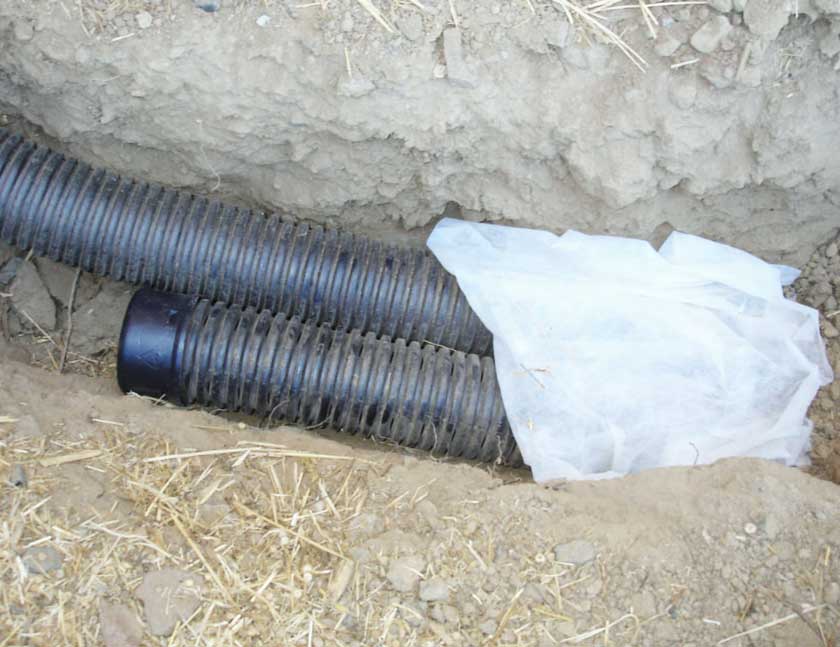
Installation of a weeping tile
Here’s a step-by-step guide to understanding how it’s done:
Excavation
The process begins with excavating the soil around the foundation, exposing the base of the foundation walls.
Heavy machinery is commonly used to ensure precision, creating a precise and even trench around the building.
Pipe Placement
Once the trench is prepared, a perforated pipe is laid at the bottom.
This pipe, often made of plastic or clay, features openings along its length, allowing water to seep inside.
This pipe is the central component of the weeping tile system, responsible for channelling water away from the foundation.
Gravel Bed
After the pipe is positioned correctly, a layer of gravel is added on top.
Gravel serves multiple purposes; it stabilises the pipe, facilitates water flow, and acts as a filter, preventing soil from clogging the perforations.
This layer is crucial for the efficient functioning of the weeping tile.
Proper Slope
The trench is crafted with a gentle slope away from the building.
This ensures that water naturally flows away from the foundation, following the path created by the weeping tile.
The slope is carefully calculated to encourage efficient drainage.
Backfilling
Once the weeping tile and gravel are in place, the trench is backfilled with soil.
Proper compaction of the soil is crucial to prevent settling over time.
Compacted soil ensures the trench remains intact, preserving the weeping tile’s functionality.
Landscaping
The final step involves restoring the landscaping.
This may include replanting grass, bushes, or any other elements that were disturbed during the excavation.
Proper landscaping not only enhances the aesthetics but also protects the weeping tile system.
The installation of a weeping tile demands expertise and precision.
When done correctly, it efficiently redirects excess water away from the foundation, safeguarding the building against potential water damage and ensuring a consistently dry and stable environment.
What are the Advantages to Using a Weeping Tile?
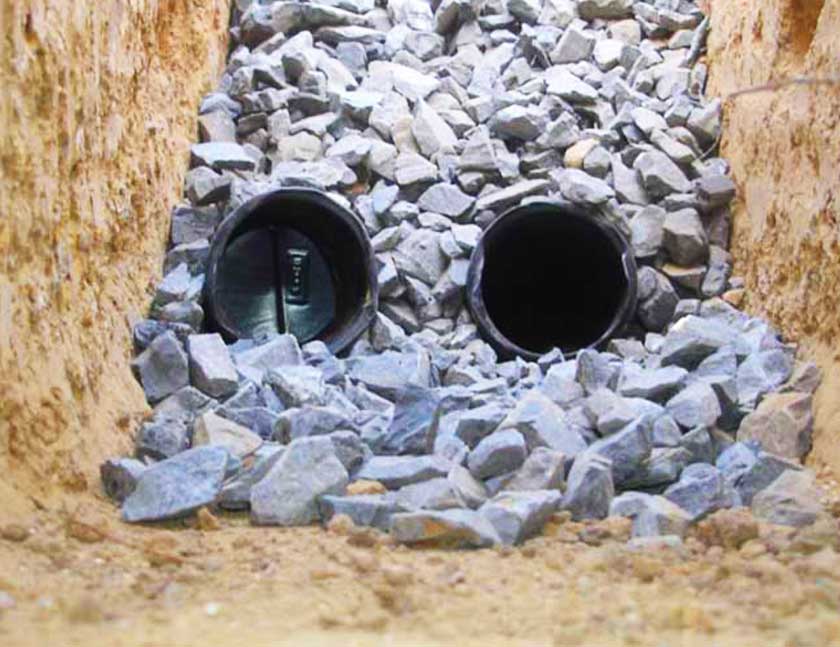
An example of a weeping tile
The use of weeping tiles offers several advantages to homeowners:
Preserving Structural Integrity
Weeping tiles help preserve the very foundation upon which homes are built.
By preventing water from infiltrating the foundation and basement, these drainage systems play a pivotal role in maintaining a home’s structural integrity.
Water, when left unchecked, can erode foundations, leading to cracks and compromising the stability of the entire structure.
Weeping tiles act as a reliable defence, channelling water away from the foundation, thus averting these potentially devastating issues.
Preventing Erosion and Foundation Damage
One of the primary advantages of weeping tiles lies in their ability to prevent erosion around a home’s foundation.
When water accumulates and saturates the soil, it can lead to soil erosion, which, in turn, affects the foundation’s stability.
Weeping tiles efficiently manage excess water, curbing erosion and ensuring that the foundation remains steadfast and secure.
Cost-Effective Waterproofing Solution
Weeping tiles offer a cost-effective alternative to extensive waterproofing methods.
Compared to complex and often expensive waterproofing systems, the installation and maintenance of weeping tiles are relatively economical.
This affordability makes them an attractive choice for homeowners seeking practical water management solutions without a significant financial burden.
Preventing Basement Flooding
Basement flooding is a nightmare for homeowners, causing immense damage and requiring costly repairs.
Weeping tiles serve as a robust defence against basement flooding by efficiently draining water away from the foundation and providing an effective solution for basement drainage.
By preventing water from seeping into the basement, weeping tiles safeguard valuable possessions and living spaces from water damage, ensuring a dry and habitable environment.
Minimal Maintenance
Weeping tiles are known for their low maintenance requirements.
While periodic checks and cleaning are advisable to maintain optimal functionality, these tasks are simple and can be performed without specialised knowledge.
The ease of maintenance ensures that weeping tiles continue to operate at peak efficiency, providing long-term protection to the home.
Enhancing Property Value
The presence of a functional weeping tile system can enhance a property’s value.
Prospective buyers often view a well-maintained drainage system as a sign of a well-cared-for property, adding to its market appeal.
Additionally, homeowners with efficient weeping tiles enjoy peace of mind, secure in the knowledge that their home is protected against the insidious threat of water damage.
This peace of mind is invaluable, fostering a sense of security and contentment within the home.
What are the Disadvantages to Using a Weeping Tile?
While weeping tiles are effective, they do have limitations:
Potential Clogging
Weeping tiles, although efficient, are not immune to clogging.
Over time, debris, soil, and roots can infiltrate the perforations of the pipes, obstructing the drainage flow.
This necessitates regular checks and cleaning, adding to the maintenance tasks for homeowners.
If neglected, clogs can compromise the system’s effectiveness, leading to water accumulation around the foundation.
Installation Complexities
While weeping tiles offer valuable advantages, their installation can be complex.
Proper placement, ensuring the right slope for water flow, and accurate pipe perforation are crucial for their optimal functioning.
Incorrect installations, often due to lack of expertise, can render the system inefficient, leading to potential water damage.
Homeowners might need professional assistance, increasing the overall installation cost.
Dependency on Proper Slope
Weeping tiles rely on gravity to channel water away from the foundation.
Ensuring the proper slope of the trench is essential. If the slope isn’t correctly established during installation or if the ground shifts, water might not drain effectively.
Water pooling can occur, defeating the purpose of the weeping tile system and potentially causing water damage over time.
Limited Effectiveness in Certain Soil Types
The efficiency of weeping tiles can be influenced by the soil composition.
In clay-heavy soils, drainage might not be as effective due to the slower movement of water through dense soil.
Additionally, in areas with a high water table, weeping tiles might not be sufficient on their own to manage excessive water, necessitating additional drainage solutions.
Potential Disruption during Installation
Installing weeping tiles often involves excavation around the foundation.
This excavation can disrupt landscaping, driveways, and other outdoor features.
While these disruptions are temporary, they can be inconvenient and require additional resources and effort to restore the property’s aesthetics after installation.
Environmental Concerns
Certain older weeping tiles were made from materials like asbestos cement, posing environmental concerns during their removal or if they deteriorate over time.
Modern weeping tiles are typically made from safer materials, but proper disposal of old systems still requires adherence to environmental regulations.
What are Alternatives to Weeping Tiles?
Several alternatives can be considered based on specific drainage needs:
Interior Drainage Systems
Interior drainage systems, also known as interior French drains, involve installing a drainage channel inside the basement or crawl space.
This channel collects water that seeps through the foundation walls or floor, directing it to a sump pump for removal.
While these systems don’t prevent water from entering the basement, they efficiently manage it, ensuring a dry living space.
Interior drainage systems are particularly useful for homes where exterior solutions are challenging to implement due to landscaping or space constraints.
Gutter and Downspout Extensions
Properly functioning gutters and downspouts are crucial for managing roof runoff effectively.
Extensions can be added to downspouts to direct water farther away from the foundation, preventing it from pooling around the house.
This simple modification can significantly reduce the amount of water that seeps into the soil around the foundation, minimising the need for extensive drainage solutions.
Grading and Landscaping
Proper grading ensures that the ground slopes away from the foundation, preventing water from accumulating around the house.
Landscaping techniques such as creating swales or berms can further direct water away from vulnerable areas.
These natural solutions utilise the landscape’s contour to manage water flow, reducing the need for artificial drainage systems.
Rain Gardens
Rain gardens are designed depressions planted with native vegetation.
They capture and absorb rainwater, preventing it from becoming runoff.
By strategically placing rain gardens around a property, homeowners can effectively manage rainwater, reducing the burden on drainage systems.
Rain gardens also enhance the landscape’s aesthetics and provide ecological benefits.
Waterproofing Coatings
Waterproofing coatings can be applied to foundation walls, creating a barrier against water intrusion.
These coatings are especially useful for older homes with porous foundations.
While they don’t address subsurface water, they prevent seepage through foundation walls, complementing other drainage solutions.
Conclusion
Weeping tiles, despite their unassuming name, play a crucial role in maintaining a dry and stable home environment.
Understanding their function, installation process, and alternatives equips homeowners to make informed decisions about their drainage needs.
Whether used alone or in conjunction with other drainage solutions, weeping tiles stand as a stalwart defence against the potential challenges posed by excess water around residential foundations.

